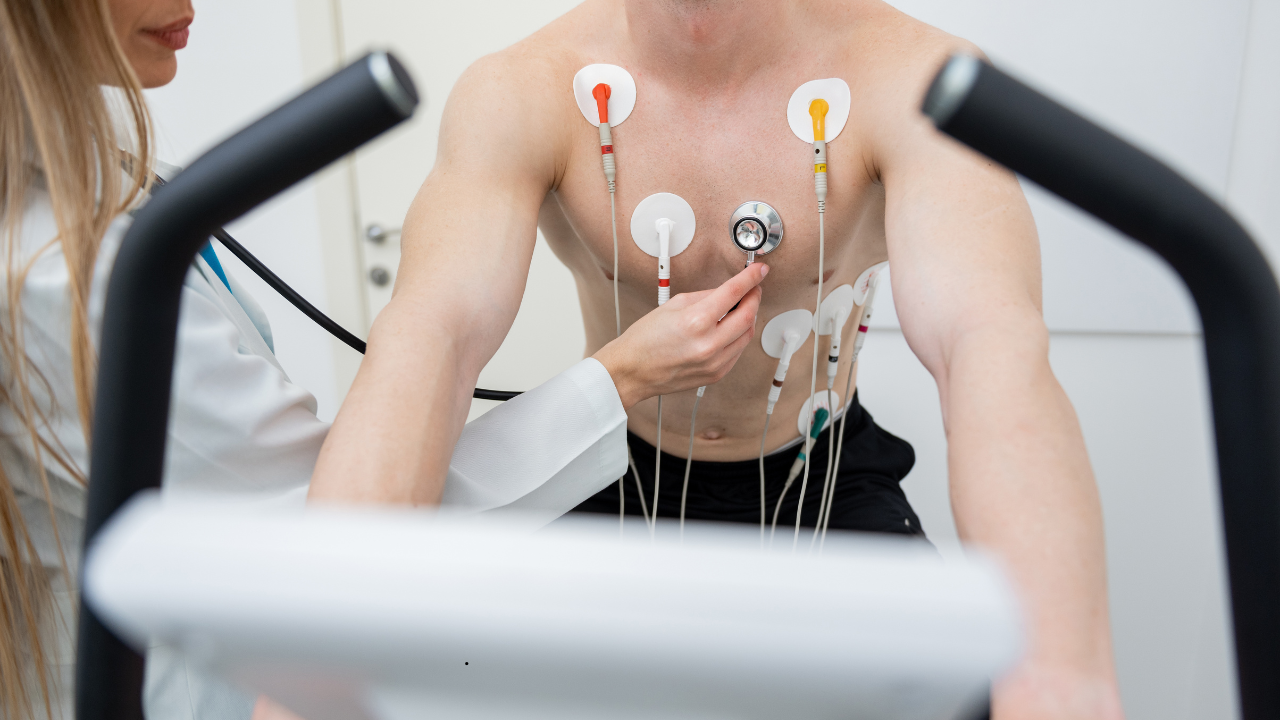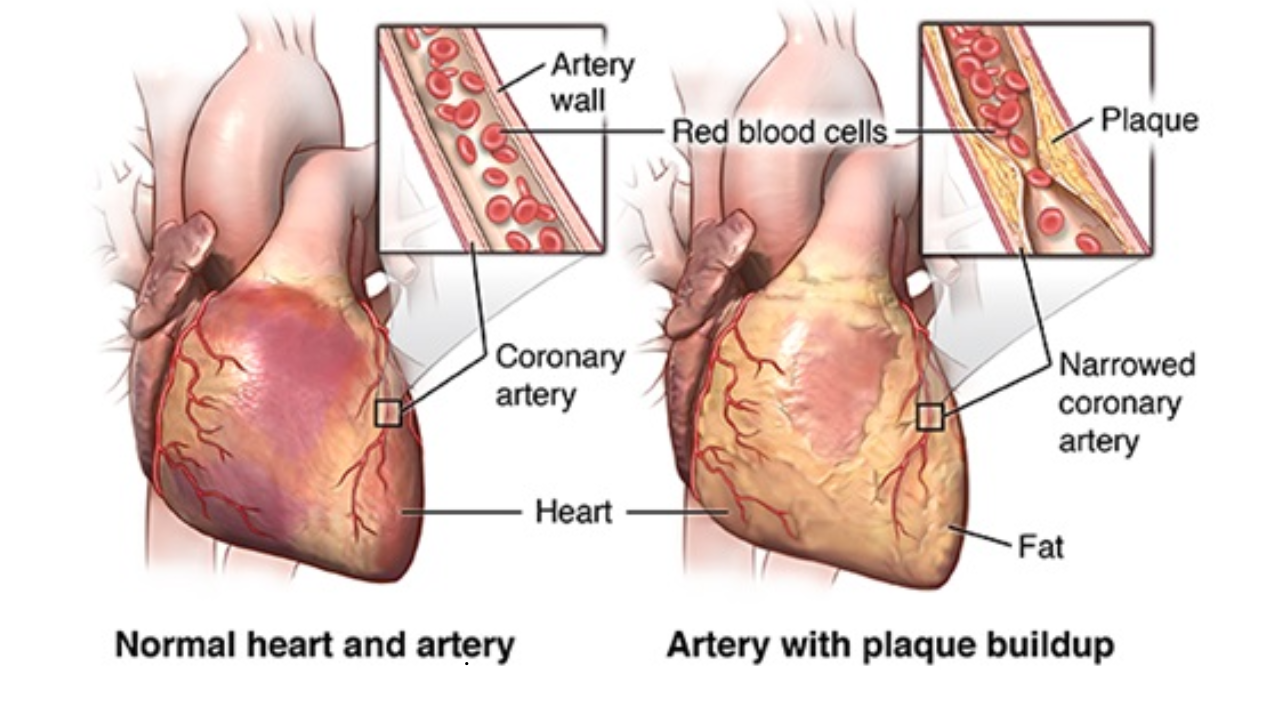- Health Conditions A-Z
- Health & Wellness
- Nutrition
- Fitness
- Health News
- Ayurveda
- Videos
- Medicine A-Z
- Parenting
Scott Swift, Taylor Swift's Dad Underwent A Quintuple Bypass Heart Surgery, Here's What We Know About It So Far

Credits: Treemily
Scott Swift, 73, pop singer Taylor Swift's dad just underwent a quintuple bypass surgery, revealed Taylor during one of the episodes of Travis Kelce and Jason Kelce's New Heights podcast.
She also shared that she had moved in with her dad earlier this year to take care of him for a speedy recovery. She noted that her father has been full of gratitude after the surgery. "He was the loveliest patient ever. He just kept saying thank you over and over again."
Why Did Scott Swift Need A Surgery?
Taylor called the surgery "really intense" and said that her dad's heart always had a healthy ECG or electrocardiogram. He also ensures to get it every year to remain a step ahead of any physical ailments. However, five hard blockages were found in his heart during a resting stress test.
"He's been telling all his friends, 'You need to get the stress test,' because that's what's actually preventative. If you can find that earlier, you don't have to have a bypass surgery," she said.
Taylor confirmed that her father is doing "incredibly well" and that his humor has helped him go through during the hard times. It still is very much intact in him.
She shares that he did not know how many blockages he's had, on being told that he underwent a quintuple bypass, which means five blockages, he also joked about it. "Well, you see, I come from a very competitive family," he told Taylor.
What Is A Stress Test?

As per the National Institute of Health (NIH), US, it is a form of physical test that typically utilizes electrocardiography along with blood pressure monitoring and exercise, which involves a treadmill or bicycle.
However, in a resting stress test, the assessment happens when the heart muscle is at rest after stress. This stress helps in identifying areas of reduced blood flow like ischemia or damage to the heart muscle, which can indicate conditions like coronary artery disease.
The test involves injecting a radioactive tracer into the bloodstream, then using a special camera to take images of the heart at rest and after stress.
What Is A Bypass Surgery?

As per Johns Hopkins Medicine, bypass surgery or coronary artery bypass graft surgery (CABG) is a procedure used to treat coronary artery disease. Coronary artery disease (CAD) is the narrowing of the coronary arteries. These are the blood vessels that supply oxygen and nutrients to the heart muscle. CAD is caused by a build-up of fatty material within the walls of the arteries. This buildup narrows the inside of the arteries, limiting the supply of oxygen-rich blood to the heart muscle.
How Does It Work?
One way to treat the blocked or narrowed arteries is to bypass the blocked portion of the coronary artery with a piece of a healthy blood vessel from elsewhere in your body. Blood vessels, or grafts, used for the bypass procedure may be pieces of a vein from your leg or an artery in your chest. An artery from your wrist may also be used.
ALSO READ: 4 Rare Heart Diseases That Are Becoming Common By Each Passing Day
This surgery is done to treat a blockage or narrowing of one or more of the coronary arteries. It can restore the blood supply to your heart muscle when nonsurgical procedures are not a choice.
More Updates From The Swift Family
In addition to Scott, Taylor shared that her mom Andrea Swift, too, under a procedure. “My mom just got a new knee,” Taylor shared. “She’s doing great. She’s scampering around. We’re not quite at scampering yet, but she’s doing great.”
She noted that her parents are her best friends.
"It was actually one of the most special things that's ever happened to me, spending all that time with them this summer. You have those long talks that you don't have when it's a small, concentrated period of time.”
CDC To Appoint Vaccine-Skeptic Surgeon Ralph Abraham As Deputy Director

Credits: Wikimedia Commons
It is no news that all appointments in the United States' Health Departments that have been made under RFK Jr are of the people who have been vaccine critiques. In a similar scenario, Dr Ralph Abraham, a state surgeon from Louisiana, who had ordered health officials to stop promoting mass vaccination will now serve as the US Centers for Disease Control and Prevention's (CDC) principal deputy director.
It was in February when Abraham instructed health department staff to stop promoting vaccines for preventable diseases.
He wrote in a February 13 internal memo that although patients should continue speaking with their providers about the risks and benefits of vaccination, the health department will stop promoting mass vaccination. The memo was issued on the same day Robert F. Kennedy Jr. was sworn in as secretary of the US Department of Health and Human Services. While his hiring has not been announced by HHS, but his new role has been confirmed. It was first reported by health newsletter Inside Medicine.
Who Are Part Of The CDC?
As of now the CDC does not have a permanent director. Kennedy ousted Dr Susan Monarez from the role in August. Jim O'Neill, who is serving as the deputy HHS secretary said this month that the agency has had "mission creep" and needs to focus on its original mandate.
“We want to … take the people we have and put them to their best use. And secondly, we are always recruiting. We are eager to hire wonderful scientists and data engineers and AI engineers and researchers and drug reviewers across the department, including CDC. If you are talented, you care about health or human services – please come work with us.”
What More Do We Know About Ralph Abraham?
The news of his appointment comes days after the CDC changed its guidelines on vaccines on its website. The CDC website now links vaccines with autism and states that "vaccines do not cause autism is not an evidence-based claim".
While Abraham has not outrightly been anti-vaccine, he had asked the health staff to not promote it for preventable diseases or infection and has long echoed Kennedy's 'Make America Healthy Again' (MAHA) rhetoric. He had questioned trust in the pharmaceutical industry and public health institutions.
“The solution to increased spending and declining outcomes in our country is unlikely to come in the form of a pill or a shot,” Abraham said in a February statement. “Much of the solution will likely come down to the usual hard work of improving diet, increasing exercise, and making better lifestyle choices.”
Changes In CDC
Apart from the guidelines being changes on autism and vaccine link, in August, Kennedy dismissed all members of the CDC's Advisory Committee on Immunization Practices (ACIP), the body whose recommendations form the basis of state immunization mandates.
Just days later, eight new members were named—though one withdrew amid ethics concerns. Unlike their predecessors, this panel includes only one epidemiologist and one infectious disease specialist, with no virologists or immunologists. Many appointees lack peer-reviewed vaccine research altogether, and those who do have published, on average, 78% fewer vaccine-related papers than former members.
Are Fluoride Levels In US Drinking Water Harmful? New Findings Link Them to Stronger Teen Cognition

Credits: Canva
The long-standing practice of adding fluoride to community drinking water in the United States is now under sharp review as questions rise about whether its advantages continue to outweigh possible risks. A fresh set of findings pushes back against recent warnings about fluoride in water and suggests that it might offer added benefits.
This renewed national discussion began after a government report from the National Toxicology Program stated that high fluoride exposure was tied to lower IQ in children. That report, however, assessed fluoride amounts that were at least twice higher than federal recommendations and had limited information about what happens at lower, commonly used levels, as per CNN.
However, the latest study examined fluoride quantities that match the usual suggested range in drinking water. Researchers found strong evidence showing that children who grew up with water containing these lower levels of fluoride performed better on cognitive assessments than those who had no fluoride exposure.
Fluoride in US Public Water Faces Renewed Questions
Dr. Rob Warren, lead author of the study released in Science Advances, said he was surprised by the National Toxicology Program’s earlier conclusions and felt the need to produce evidence more suitable for public policy. He explained that he pursued the work because it was a major question without a clear answer.
The national debate has also intensified as US Department of Health and Human Services Secretary Robert F. Kennedy Jr. has labeled fluoride an industrial waste and pointed to possible IQ loss while calling for a rollback of federal guidance. Utah and Florida have already moved to prohibit fluoridation of public water.
As per CNN, Warren compared the situation to testing a heart medication. If the advised dose is 100 milligrams, but a study measures reactions to nearly a million milligrams, the results do not reflect what happens at the normal dose. He said that this is how much of the fluoride research has been structured and that only extremely high doses have shown harmful effects, which is not helpful for policy decisions.
Warren directs a long-running program that began in the US Department of Education and has followed tens of thousands of Americans from their high school years in the 1980s through several decades.
Fluoride and Cognition: What The Study Found
For the current analysis, the team linked math, reading and vocabulary test scores from nearly 27,000 participants to the level of fluoride in their childhood drinking water. These measurements were based on older records from the US Geological Survey and the Department of Health and Human Services, as per CNN.
Researchers worked under the assumption that participants spent their entire upbringing near their high schools. They sorted people into three groups. One group had steady exposure to recommended fluoride levels either through natural sources or public water treatment. Another group never had fluoride in their water. A third group had mixed exposure because their community changed its water policy at some point.
Students who had fluoride for only part of their childhood scored higher on tests than peers who never had it. Those who grew up with fluoride throughout all their childhood years scored even better. Follow-up testing that continued up to 2021, when many had reached about 60 years of age, also showed no sign that fluoride contributed to cognitive decline.
Warren clarified that cognitive tests are not exact IQ scores, although they relate strongly. Test results reflect both mental ability and the learning opportunities a person receives. He is currently working on a follow-up project that will look more closely at fluoride and IQ with improved childhood location data.
Other studies this year suggested that removing fluoride from public water in the United States could lead to more than 25 million extra cavities among children and teenagers in five years along with nearly 10 billion dollars in dental treatment costs. Although the new study did not measure dental health, experts noted that pain from untreated cavities can interfere with a child’s ability to attend school or stay focused, which may influence academic scores.
Why Experts Still Differ on Fluoride Policy
Fluoride occurs naturally in some groundwater and foods. It protects teeth by strengthening enamel, which can be damaged by acids formed from bacteria, plaque and sugar. Communities in the United States started adding fluoride to water systems in 1945 to improve oral health in a cost-effective way.
The American Dental Association and numerous specialists continue to support community water fluoridation. The US Centers for Disease Control and Prevention has also kept its recommendations unchanged. The agency does not have authority to require fluoridation, but it considers 0.7 milligrams per liter the ideal amount.
Recently, the US Food and Drug Administration restricted the use of prescription fluoride supplements. The agency noted that unapproved fluoride products may alter the gut microbiome and that better options exist to protect teeth.
In a written response published with the new research, Dr. David Savitz from Brown University argued that before ending a decades-long public health practice, there must be clear proof of harm at commonly used fluoride levels. He wrote that there is still no convincing evidence that fluoridation lacks benefit or causes damage at recommended doses.
He quoted a well-known saying, noting that if something is not broken, there is no reason to fix it. He said the new study suggests that fluoridated water remains on the side of being effective and safe.
Neuralink: Can Elon Musk’s Brain Chip Help Reverse Paralysis In The Future?

Credits: Canva
The Neuralink chip is a piece of technology that’s hoped will one day allow people to operate devices like phones and computers using their thoughts. Its creator, tech mogul Elon Musk, describes it as a “Fitbit in your skull with tiny wires.” Elon Musk's brain implant company Neuralink said recently that 12 people worldwide have received its chips. The device is meant to have several applications, from restoring motor functionality within people to enabling a brain-computer interface. The question now is whether it will be able to reverse paralysis in the future or not.
Neuralink: What Is Neuralink, And What Does It Do?
Neuralink is a neurotechnology company Musk set up in 2016. The device is roughly the size of a coin and is implanted into the skull, with hair-thin threads placed inside specific parts of the brain to form a working brain-computer interface.
The implant records brain signals and transfers them to an external device, such as a smartphone, through Bluetooth. Its first product, Telepathy, is designed to let a person operate their phone or computer through intention alone. By placing the chip in regions that manage movement, Neuralink believes it could help people living with neurological conditions. Musk has said that early users would likely be people who cannot use their limbs.
Neuralink: What Testing Has Neuralink Carried Out In The Past?
As per Reuters, the company has run trials using monkeys and pigs. Demonstrations have featured monkeys moving a cursor or playing simple on-screen games using the implant. Neuralink maintains that no monkey died because of the device itself, though reports have circulated describing complications in some animals, including paralysis, seizures and swelling in the brain.
Neuralink: Can Neuralink Cure Paralysis?
The human brain contains millions of neurons responsible for movement, emotion and thought. These neurons send electrical signals down pathways that run from the brain to the rest of the body. If a person tries to stand up, the brain sends electrical instructions to the legs, and the reaction is instant. Paralysis develops when pathways in the spinal cord are damaged or blocked, according to the description on Neuralink’s website.
Because the Neuralink implant reads the brain’s signals, it can forward those signals to the limbs even when the spinal cord no longer relays them. This would require one implant in the brain and another placed below the injured area of the spinal cord. With steady training, a person could regain movement, raising the possibility that Neuralink may one day help restore mobility.
Neuralink Ethical Concerns
Experts have questioned the company’s experiments on animals and the general risks linked to brain operations, which can include seizures or bleeding. They have also pointed to worries about data privacy and long-term surveillance, since there is limited detail on how much control users will have over their neural information.
Earlier this year, the US Department of Transportation fined the company for failing to register as a carrier of hazardous biological material, including implants removed from primates, according to agency records reviewed by Reuters.
Neuralink Is FDA Approved
In late May 2023, the FDA granted Neuralink permission to start human testing. The company said on Twitter that the approval marked the beginning of its first clinical study in people, calling it a vital step toward making the technology accessible in the future.
Neuralink has continued to share updates, and in July 2025, it announced that it had completed two brain-implant procedures on the same day. Both individuals are said to be recovering well. Musk responded soon after, expressing confidence in what the technology might achieve in the coming years.
© 2024 Bennett, Coleman & Company Limited

